Media Architecture (IMA NYU, Fall 2021)
Description
The course examines media and technology in relation to the architectural space, analyzing artistic and creative applications, and focusing in realizing projects that reimagine physical spaces as hybrids that span spectra, dimensions, realities. By utilizing related literature and case studies as inspiration, students apply art and design methodologies to realize original and exciting practical work. The students in Media Architecture (Fall 2021) are asked to explore a range of taught topics and workshop resources, such as concept design, media composition (2D/3D), procedural design, virtual environments, creative coding, to name a few. Most of the workshop content focuses on Unity3D, although other applications related to media art and design is also covered (video editing, mastering production, audiovisual design). Through the exploration of these multidisciplinary areas (both in theory and practice), students develop concepts that are further being realized by utilizing state-of-the-art development methods, reiterated and refined, and finally presented to related offline and online platforms/buildings/exhibitions.
The learning objectives for this course are to:
- Have a comprehensive understanding of media architecture practices, and how they are utilized in developing innovative art and commercial installations, media designs, and interactive spaces.
- Utilize a range of contemporary media design and technical skills in media design, projection mapping, and realtime interactive systems.
- Develop theoretical and hands-on practice related to project conceptualization, research, development methods, and finalization of ground-breaking work.
- Build strong multi-disciplinary skills, and create innovative and challenging interactive, installation, and visualization projects.
Assignments
- Architecture Reframed. For Assignment 1, students need to develop their own media architecture that is based on a popular site or monument, reframing its function, aesthetics, and communication stimuli, which in a sense reframes (and re-renders) its original meaning. The work needs to be designed as a real-time virtual space. In addition, pre-production material has to be produced, such as concept sketches / drawings / animations, and attempt to communicate their ideas and final implementations effectively during the assignment’s presentations.
- Assignment 2: Invisible Spaces. Inspired by Italo Calvino’s “Invisible Cities”, students are asked to create their own version of a city / urban space / interior environment that captures and visualizes imaginative, immaterial, metaphysical, and/or invisible elements. By using contemporary media development techniques and artistic and creative fuel, each assignment needs to have a rendered or real-time interactive version of a never-made-before space that integrates masterfully media and architecture.
The final works of the students were exhibited as a showcase in Planet One, Sinar Mas Plaza (White Magnolia), at the North Bund (Shanghai). The exhibition was officially supported by Unity Technologies (China).
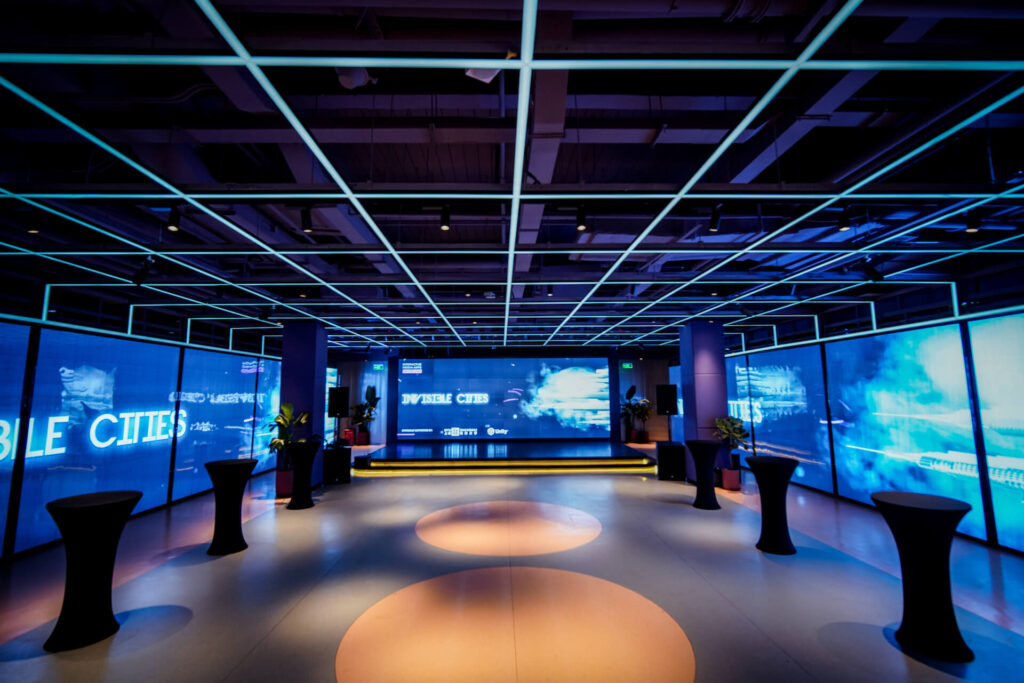
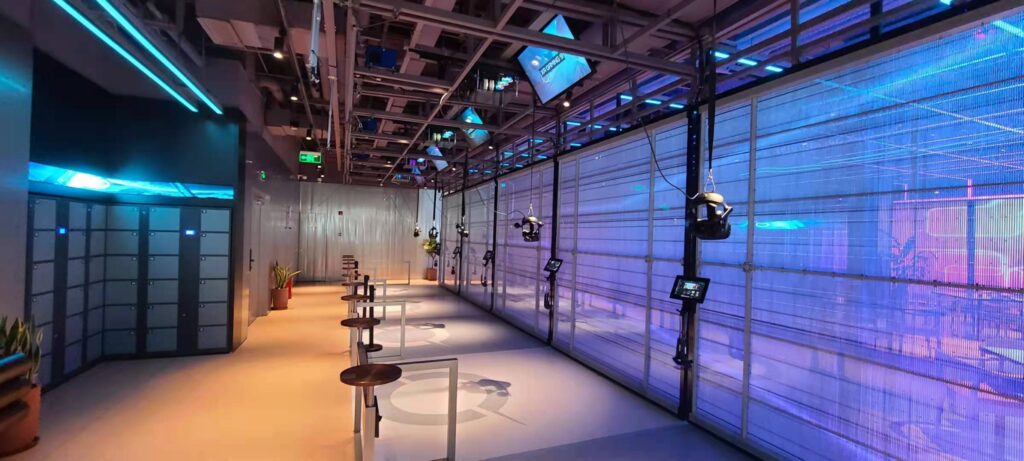
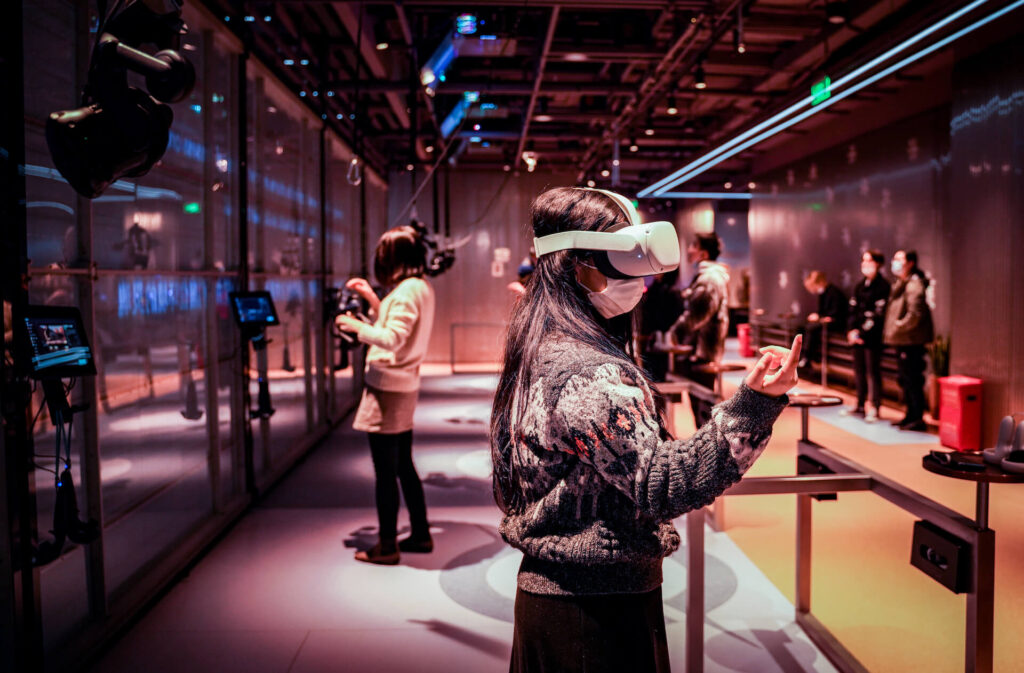
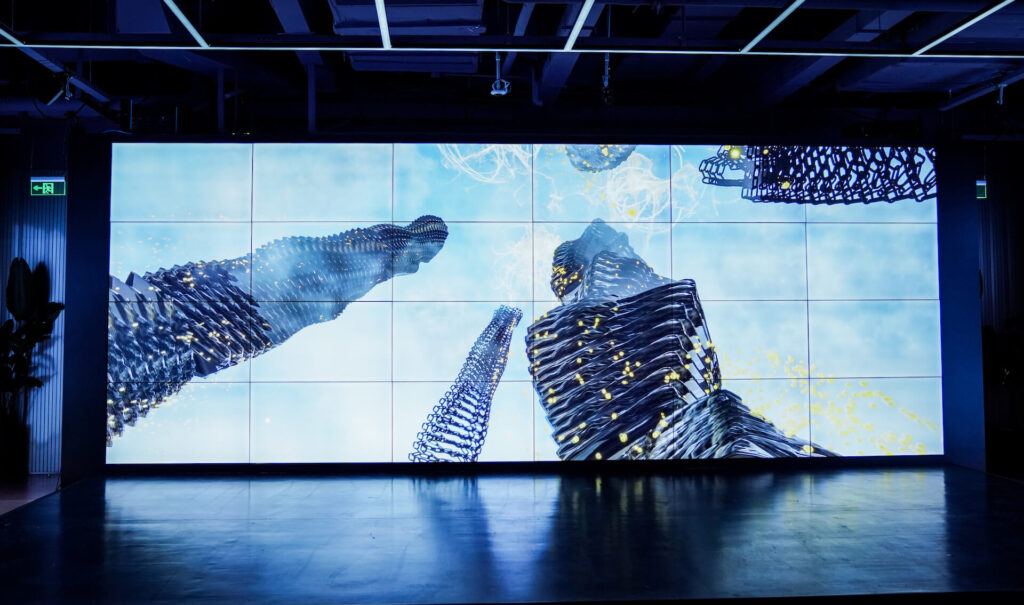
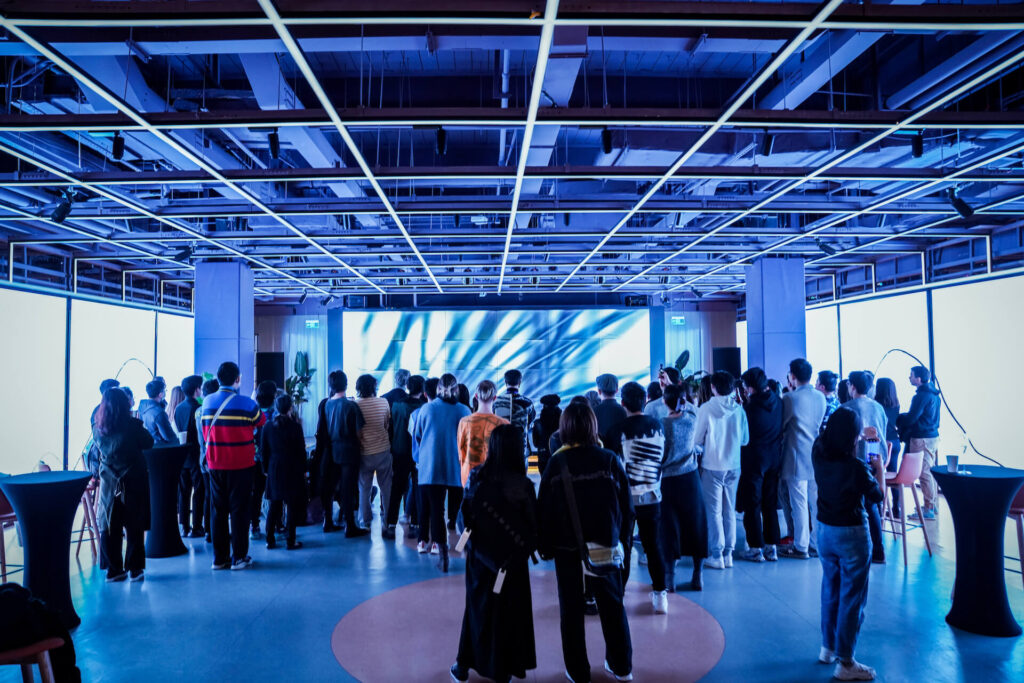
Syllabus (in brief)
Session 1: Reframing / Αναδιαμόρφωση

The session aims to challenge our understanding of what architecture and media are, in an attempt to reframe mainstream definitions through contemporary critical lenses. Here, the reframing process becomes highly important as alternative perspectives lead to inspired and meaningful insights, which become necessary for driving forward thought and action.
- Course introduction: Website, mode, syllabus, resources
- Faculty-students introduction
- Student data collection
- Class learning objectives
- Lecture Session
- Discussions
- Homework (2%): Select an example that can be characterized as “media architecture” according to the definitions discussed in this session. This architectural site, should not contain any conventional media technologies, such as computers, LEDs / OLEDs / LCDs, projection screens, televisions, sensors, mobile phones.
Create a blog post and do the following: (a) Argue in a 200-word article why you believe this can be characterized as “media architecture”. (b) Explain why this architecture was selected; did it intrigued you? How so? (c) Include photos and/or videos of the selected site. - Preparation for Session 2: Install Atom, and Unity3D with LTS version 2020.3
- Resources: Foundation: Start Creating with Unity, Documentation: Making a blog with NYU, Notion.so
Session 2: Push, Motivate, Set in Motion / Ωθώ, Κινώ, Θέτω σε Κίνηση

This class intends to provide a thorough background for media architecture practices (and their objectives), which help us acknowledge important historical breakthroughs as well as contemporary state-of-the-art cases. By investigating existing renowned works in-depth, a sophisticated development process can be applied to our current and future work.
- Homework discussion
- Class learning objectives
- Lecture Session
- Workshop: Introduction to Unity
- Homework (2%):
- Practice: By using the project demonstrated in this session, add your own ready-made architectural models and videos to showcase them in Unity. Make sure that you check the tutorials below. We will see the results in class.
- Resources
Session 3: Conceptualizing / Συλλαμβάνοντας το Γενικό Πλαίσιο

To begin the creation of new work, a thorough investigation needs to take place that answer questions such as: What is the meaning of this work? Why is it important to exist? Where does it exist and for whom? Have there been similar projects in the past? What is the story, arrangement, colors, or ambiance of the composition? In this session, we are going to explore methods for concept design to assist out-of-the-box developments.
- Homework discussion
- Class learning objectives
- Lecture Session
- Guest Session: Concept Development (Zhu Ping, DUStudio/RHO)
- Workshop: Materials, Shaders, Skybox in Unity
- Homework (2%):
- Practice: Create a mood-board and sketch(es) for your Assignment 1 – use one slide/image with your sketch(es), and one slide/image for your mood-board (colors, materials, textures).
- Practice: Apply at least 5 of these materials in an object in Unity – for example, use 5 different cubes (or 3D object) to showcase your material selections.
- Resources
Session 4: Supporting Infrastructures / Υποστηρικτικές Δομές

In this session we will be covering development methodologies to further assist the practical implementation of your projects, focusing on important properties such as rendering, lighting, and the setup of lightmaps.
- Screening: The Third & the Seventh
- Class learning objectives
- Workshop: 3D Scanning with EinScan Pro
- Homework discussion
- Workshop: Rendering & Lighting in Unity
- Homework (2%):
- Practice: In groups of 2, use EinScan Pro to scan and import into your project at least 2 models. For each model, use 3 different materials/textures/shaders and lighting settings (total of 6 variations).
- Resources
Session 5: Assembling Rhizomes / Συναρμολόγηση Ριζωμάτων

This session will be focusing on tutorials, discussions, and practicals that lead towards the finalization of Assignment #1.
- Homework discussion
- Tutorials / Practice
- Workshop: Exporting with Unity (Recorder), Compression with Handbrake
- Resources
Session 6: Mid-Term Presentations (Assignment #1)

Class presentations for Assignment #1.
- Assignment 1 Presentations / Discussion / Feedback
- Assignment 2 Brief
- Homework (2%):
- Reading/Writing: Have a look at Italo Calvino’s Invisible Cities. Select 3 different cities to comment; explain why you selected those, and why do you believe they are interesting/unique/inspiring/etc.
Session 7: Peripatetic Explorations / Περιπατητικές Εξερευνήσεις

In the second part of this course we will be focusing on optimizing the visual appearance and functionality of our compositions. We will be looking at certain production tools in Unity, such as the High Definition Rendering Pipeline, the Visual Effects Graph, the Shader Graph, and many more. In this session, we will have a first introduction to these tools, and understand the basics needed for the development of Assignment #2
- Homework discussion
- Class learning objectives
- Lecture Slides / Session Recording
- Homework (1%):
- Practice: Review this tutorial presented by Unity China in NYU Shanghai, and replicate the instructions for your own HDRP project. Make a few screenshots, and add them to a blog post.
- Resources:
Session 8: Immaterial Speculative Spaces / Άϋλοι Πλασματικοί Χώροι

Can emotion be visualized? Can it take a physical form as if it becomes itself an architecture? How about other concepts such as metaphysics, relationships between people, chemical properties of the air, or even large cosmological events? In this session we will review certain approaches in answering these questions, and have a deeper understanding on how immaterialism can lead to speculation and design. In addition to this, we will review the Visual Effects Graph, a tool to generate and control large particle systems.
- Homework discussion
- Class learning objectives
- Lecture Session
- Workshop: Unity Particle Systems and the Visual Effects Graph
- Homework (2%):
- Practice: Create 3 GIFs (with Giphy Capture) that display three different versions of your own VFX graph particle systems. Add the GIFs to a blog post.
- Reading: What is Speculative Architecture?
- Resources:
- Introduction to the VFX Graph
- VFX Graph Overview
- VFX Graph Tutorial (4 episodes)
- Point Cache with VFX Graph,
- Bonus: Unity Point Cloud (Project File)
Session 9: Animated Diffusions / Κινούμενες Διαχύσεις

For this session we will be focusing on creating our own shaders by using the Shader Graph, which is part of the HDRP in Unity. Here we will have a look at the possibilities that can be created by using custom-made shaders, or remix shaders of others. Through this learning-by-doing approach, we can advance our skills in shader design, and utilize our own creations in our projects.
- Homework discussion
- Class learning objectives
- Workshop: Unity Shaders
- Guest Talk: “All about NFTs” with BlockCreateArt
- Homework (2%):
- Practice: Review the video session of the workshop
- Research: Identify Assets, models, textures, for your project. Show in class at least one asset that you are going to use in your project.
- Resources:
Session 10: Compositional Integration I / Συνθετικές Ενοποιήσεις Ι

In this session we will have a look at the development of a project from start to finish. The project here utilizes a range of techniques that we have examined so far, such as scripting, materials, reflections, lighting, and more.
- Homework discussion
- Class learning objectives
- Workshop:
- Compositional Integration I – HDRP, PBR, lighting reflections, VFX
- Shaders – Lit/Unlit/VFX Shaders
- Resources
Session 11: Compositional Integration II / Συνθετικές Ενοποιήσεις ΙΙ

In Compositional Integration II we will have a look at the development of a project that uses Cinemachine. The project will cover development techniques for Cinemachine (virtual cameras, dolly tracks, volumes), and it will also reference the post-processing stack, as well as the exporting process with the Recorder.
- Homework discussion
- Class learning objectives
- Workshop: Rendering a scene with Cinemachine, Post-Processing, and Recorder
- Resources
Session 12: Field Trip (installation space analysis and testing)

- Discussion / Tutorials / Reflection
- Homework:
- Reading: Ultra-Subjective Space
Session 13: Formative Assessment / Διαμορφωτική Αξιολόγηση

Formative assessment for Assignment #2. Students are expected to present their work to their peers and instructor, and receive constructive feedback that lead towards the finalization of their project. In addition, the session will consist of tutorials and related practice (debugging, etc.).
- Homework discussion
- Class learning objectives
- Tutorials / Practice
- Resources
Session 14: Final Presentations & Submissions / Τελικές Παρουσιάσεις & Υποβολές

Class presentations for Assignment #2.
- Assignment 2 Presentations / Discussion / Feedback
- Course Conclusion / Critical Reflections